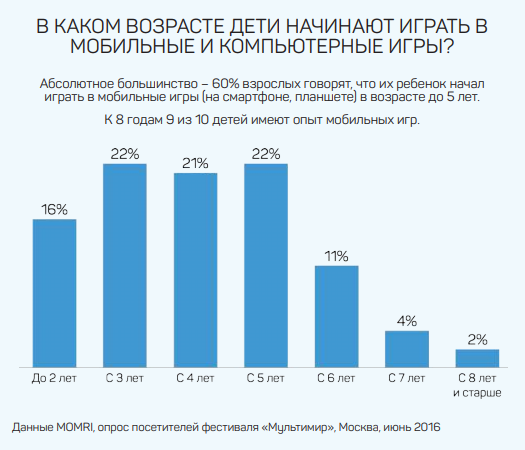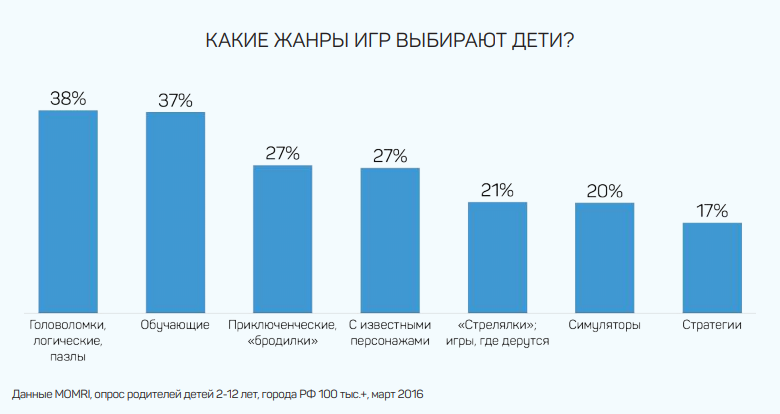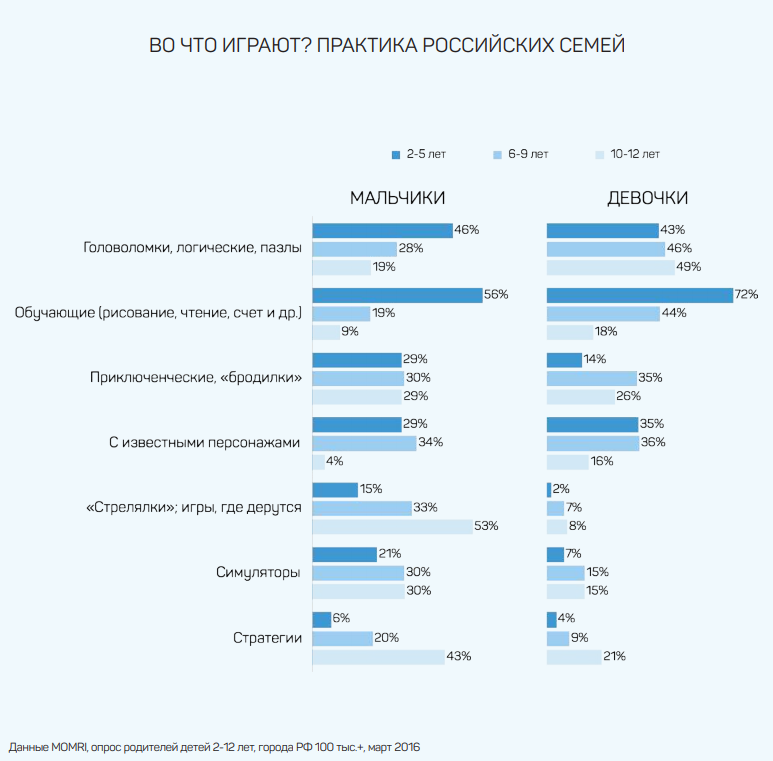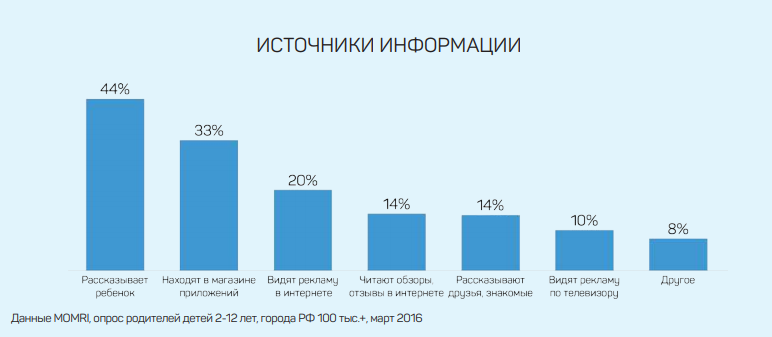On March 19, the Institute of Modern Media (MOMRI) published a study on how children interact with media in modern Russia. A separate chapter in the report is devoted to video games.
What kind of report?
“Children. Media consumption. 2017”, which is the name of the report, is a voluminous study on the relationship of a Russian child with content. In other words, how and what he watches on TV, what and where he listens to music and, of course, how much and when he plays digital products.
MOMRI’s work is very voluminous. We are talking about a document of more than a hundred pages with graphs, tables, expert assessments and quotes from the respondents themselves – parents and their children.
Most of the data were obtained during a survey of about 10 thousand people: from parents – about 7 thousand, the rest – from children and adolescents of two or more years.
What can you learn from its non-game part?
Researchers consider the audience to be children up to 12 years old (not including twelve-year-olds). This is 22.6 million people, 15.4% of the total population of the Russian Federation. At the same time, the age group closest to this at 12-13 years is another 20.9 million.
As the authors rightly point out, “this is the most media generation. The digital environment, to which their parents had to adapt for years, is natural and familiar to them.”
48% of children watch YouTube every day, a third of all children over the age of eight actively chat in messengers, another third of the same age communicates and works with content on social networks.
They have no problems accessing the devices. By the age of ten, 91% of children have a smartphone or tablet at their disposal, and sometimes both devices at once. 49% of children under 12 years of age work with a PC in some way.
The main facts and figures from the chapter “Games and mobile applications”
What do children play on?
45% of children regularly spend time playing video games. In fact, the audience is larger, if we do not talk about regularity. 71% of children aged two to twelve play games on one device or another.
Every sixth child starts playing from the age of 2. But, as a rule, they start playing video games from the age of 5. The first platform is mobile. This was stated by 60% of parents during the survey. Those who get acquainted with the games later are a minority.

There is nothing strange in this, given the wide level of penetration of mobile devices.
The most popular gaming device among children is a tablet (62%), followed by a smartphone (44%) and only then, by a significant margin, a personal computer (27%).

But a lot depends on the age. The older the child, the more he plays video games on a personal computer. For example, only 13% of the audience from 2 to 5 years old plays on the desktop. However, among the age group from 10 to 12 years, the share of active PC gamers is already 39%.
How and what do children play?
Until the age of ten, children play three games in a row in most cases. But the situation changes with age. Those who have turned ten are usually limited to two. In general, “the majority of children aged 2 to 12 years (64%) play several games at the same time.”

The most popular projects among children are in the genre of “Puzzles and logic puzzles”. 38% of parents surveyed noted them as their children’s favorite genre. The popularity of educational applications is also high — 37%.

However, even here preferences strongly depend on the age of the child. Girls 2-5 years old adore projects about drawing, reading and counting, but by the age of ten they prefer puzzles and adventure games more.

Who downloads and buys games for children?
Since most children already have their own devices by the age of ten, it is quite logical that children learn to make decisions on jumping and playing the game themselves from an early age.
“At an early age, the choice of content is made by parents, but already at 3-5 years old children begin to influence the choice of content, and at 6-12 years old children listen to their parents’ recommendations, but they can also choose and install games themselves,” the researchers note.
“The older the child, the less often he resorts to the help of elders to download games and more often does it himself: at the age of 2 to 5 years, mom downloads games in 33% of cases, the child himself – in 19%; at the age of 10 to 12 years, this ratio is already 13% to 65%. The father’s help is almost equally in demand at all ages,” it also notes.
The main source of information about the projects to install is other children and mobile stores.

Unlike the installation, the decision to purchase an application is still made by the parent. Only 86% of respondents refuse to do this, “considering that there are enough free analogues.”
Of those who do it occasionally, 35% buy games or consumables for children in them no more than three times a year, and 20% even less often — once a year. At the same time, we are not talking about significant spending, because, according to the survey, “on average, parents are willing to pay: 540 rubles for a computer game, 370 rubles for a game for tablets, smartphones.”
Source: MOMRI
